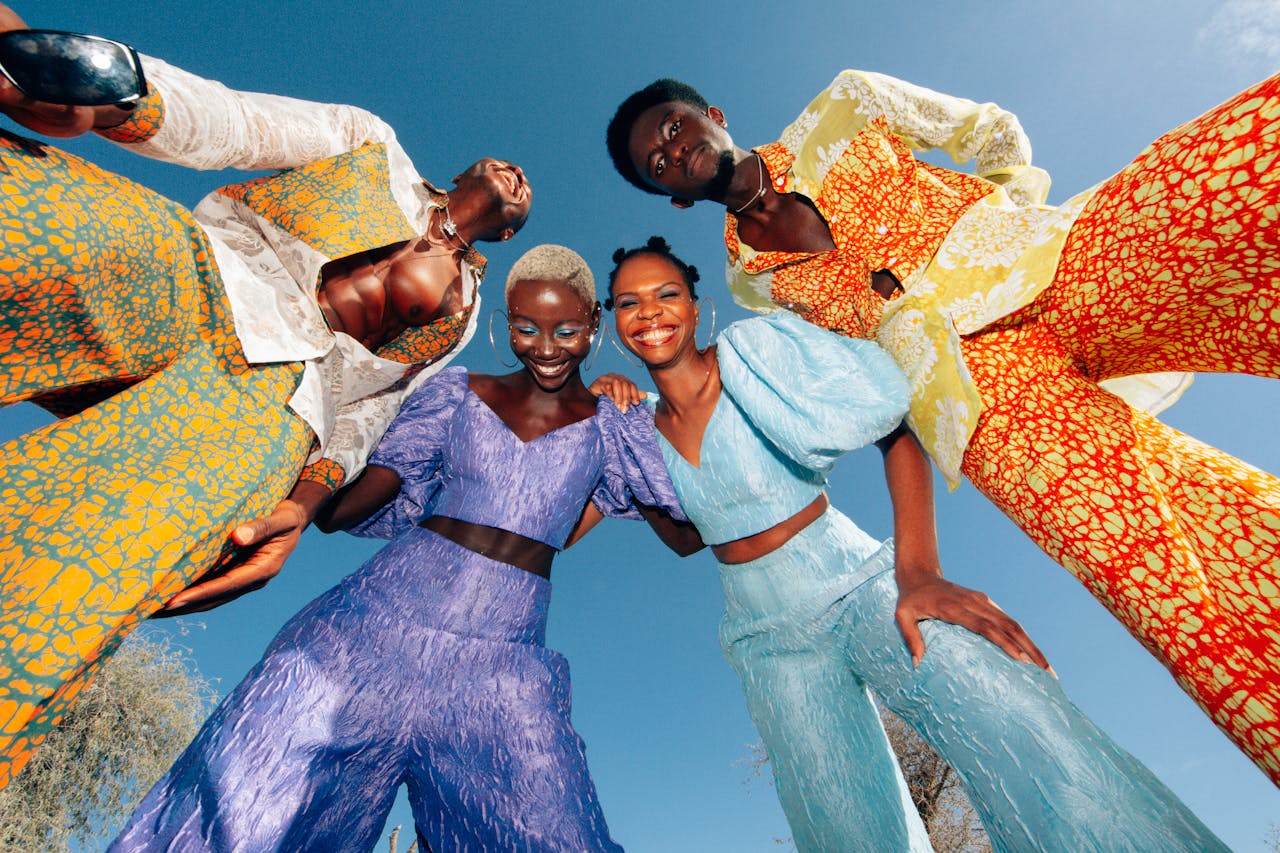Fashion from Around the World: Exploring Global Trends
Fashion is a powerful cultural phenomenon that transcends borders, reflecting the unique identities and traditions of different societies. From the vibrant textiles of Africa to the minimalist elegance of Japan, global fashion trends offer a fascinating glimpse into the diverse aesthetics and cultural heritage of various regions. Let’s explore some notable fashion trends from around the world and see how they influence and inspire the global fashion landscape.


African Fashion: Vibrant Textiles and Bold Patterns
- Ankara and Kente Fabrics: African fashion is renowned for its use of vibrant, colorful textiles such as Ankara (a wax-printed cotton fabric) and Kente (a handwoven cloth from Ghana). These fabrics feature bold patterns and intricate designs that often carry cultural and symbolic meanings.
- Dashikis and Kaftans: Traditional African garments like dashikis and kaftans are known for their loose, comfortable fit and striking patterns. These garments are not only stylish but also practical for the warm climates of many African regions.
- Modern Influence: Contemporary African designers are gaining international recognition by blending traditional fabrics with modern silhouettes, creating unique and culturally rich fashion statements that appeal to a global audience.
Japanese Fashion: Minimalism and Innovation
- Kimono and Yukata: The kimono is a traditional Japanese garment characterized by its long sleeves and wrap-around design. Yukata, a lighter and more casual version, is often worn during summer festivals. Both garments showcase the elegance and simplicity of Japanese fashion.
- Street Fashion: Tokyo’s street fashion scene is known for its avant-garde and eclectic styles. Subcultures like Harajuku, known for its colorful and playful outfits, and Shibuya, with its trendy and youthful vibe, influence global fashion trends.
- High Fashion: Japanese designers like Yohji Yamamoto, Rei Kawakubo, and Issey Miyake have made significant contributions to high fashion, known for their innovative designs, unconventional silhouettes, and use of technology in fabric manipulation.
Indian Fashion: Rich Embroidery and Luxurious Fabrics
- Saris and Lehengas: Traditional Indian garments such as saris and lehengas are celebrated for their luxurious fabrics, intricate embroidery, and vibrant colors. These garments are often worn during special occasions and festivals.
- Batik and Bandhani: Indian textiles like batik and bandhani (tie-dye) are known for their detailed patterns and rich history. These techniques are used to create beautiful and unique fabrics that are popular in both traditional and contemporary fashion.
- Fusion Wear: Modern Indian fashion blends traditional elements with contemporary styles, resulting in fusion wear that appeals to a global audience. Designers like Sabyasachi Mukherjee and Manish Malhotra are famous for their ability to combine heritage with modernity.
European Fashion: Timeless Elegance and Avant-Garde
- Parisian Chic: Paris is often considered the fashion capital of the world, known for its timeless elegance and sophisticated style. Parisian fashion emphasizes classic pieces, such as tailored blazers, trench coats, and chic dresses, often in neutral colors.
- Italian Craftsmanship: Italy is synonymous with luxury fashion and impeccable craftsmanship. Italian designers like Valentino, Gucci, and Prada are renowned for their high-quality materials, meticulous attention to detail, and innovative designs.
- British Style: British fashion is characterized by its eclectic mix of traditional and modern influences. From the classic tailoring of Savile Row to the edgy, avant-garde designs of Alexander McQueen, British fashion is diverse and influential.
Latin American Fashion: Bold Colors and Cultural Fusion
- Mexican Textiles: Traditional Mexican textiles, such as those from Oaxaca and Chiapas, are known for their vibrant colors and intricate patterns. These textiles are often used in contemporary fashion to create pieces that celebrate Mexican heritage.
- Brazilian Beachwear: Brazil is famous for its beach culture, and Brazilian swimwear is renowned for its bold colors, daring designs, and high-quality fabrics. Brands like Havaianas and Cia Marítima have gained international popularity.
- Andean Influence: Andean fashion incorporates traditional weaving techniques and materials like alpaca wool. The region’s textiles are celebrated for their warmth, durability, and beautiful patterns, often inspired by nature and indigenous culture.
Middle Eastern Fashion: Modesty and Glamour
- Abayas and Hijabs: Traditional Middle Eastern garments such as abayas (a loose-fitting robe) and hijabs (headscarves) are known for their modesty and elegance. Designers are now creating abayas and hijabs that combine traditional modesty with modern fashion trends.
- Luxurious Fabrics: Middle Eastern fashion often features luxurious fabrics such as silk, satin, and velvet, adorned with intricate embroidery and embellishments. These garments are worn for special occasions and exude a sense of opulence.
- Contemporary Designers: Modern Middle Eastern designers are gaining international acclaim by blending traditional elements with contemporary fashion. Designers like Elie Saab and Zuhair Murad are celebrated for their glamorous and intricate couture creations.


Fashion is a reflection of cultural identity, heritage, and creativity. By exploring global fashion trends, we gain a deeper appreciation for the diversity and richness of the world’s cultures. Whether through the bold patterns of African textiles, the minimalist elegance of Japanese designs, or the luxurious fabrics of Middle Eastern garments, each region brings its unique flavor to the global fashion landscape. Embracing these diverse trends allows us to celebrate our differences and find common ground through the universal language of fashion.












